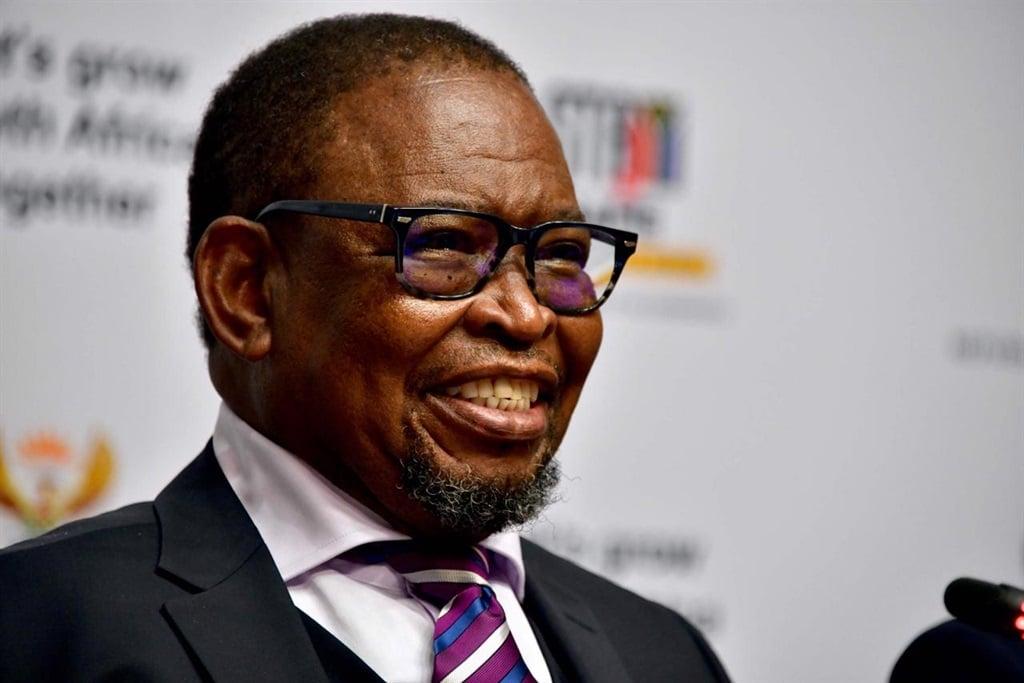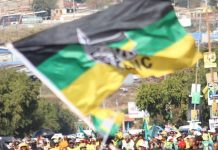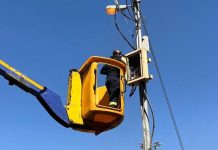Africa-Press – South-Africa. Despite the severe economic strain of load shedding, rocketing food and fuel prices, 275 basis points in interest rate hikes, a looming global recession and the KwaZulu-Natal floods, South Africa has made some headway in puncturing its ballooning government debt.
This is mostly thanks to stronger-than expected tax income from companies.
On Wednesday, Finance Minister Enoch Godongwana delivered his second Medium-term Budget Policy Statement (MTBPS), calling it a “positive” document – despite signs of increasing stress among state-owned enterprises. Transnet, Denel and Sanral all received billions, while a decision about Eskom’s R400 billion debt is still being negotiated.
Ahead of the main Budget in February, the MTBPS updates Treasury’s economic forecasts, provides policy guidance and adjusts various government department budgets.
Here are some highlights from this year’s MTBPS:
South Africa’s debt problem is stabilising
Government debt has spiralled in recent years, from R577 billion in 2007/08 to an expected R4.75 trillion this year. Due to volatile financial markets, which have pushed interest costs higher, the cost of repaying this debt will be almost R6 billion higher than expected in February.
But tax income has been surprisingly high, thanks mostly to high commodity prices which delivered super profits to mines.
In the current year, gross tax revenue is now estimated to be almost R93 billion higher than what was expected in the February Budget, and almost R84 billion more than last year.
This was despite disappointing a value-added tax (VAT) take, which is expected to be almost R5 billion below budget due to larger-than-expected refund payments. These refunds averaged R25.1 billion per month over the first half of the year. Treasury says this is due to increased capital expenditure, especially in the finance and manufacturing sectors.
But corporate tax is expected to be R62.8 billion above budget. Apart from high mining taxes, manufacturing and finance companies are also making higher profits, Treasury says.
Some of the higher-than-expected tax take is being used to reduce government borrowing.
This – along with relatively conservative government spending over the past few years – is easing fiscal pressure.
Treasury now expects that by the end of 2023/24, government revenue will exceed its spending (excluding interest payments) for the first time in 15 years. This “primary budget surplus” is expected to reach 0.7% of GDP by next year.
Gross loan debt is expected to stabilise at 71.4% of GDP this year – two years earlier and at a lower level than previously expected. South Africa will “only” borrow R411.2 billion this year, compared to Treasury’s expectation of R484.5 billion earlier this year. While gross loan debt is expected to increase to R5.61 trillion in 2025/26, the budget deficit is expected to narrow from 4.9% of GDP in 2022/23 to 3.2% of GDP in 2025/26.
This will depend on continuing strong tax receipts.
“Fiscal consolidation will soon come to a close,” says Treasury, which has hiked its spending plans for the next two years, to include more for health, education, free basic services, security and infrastructure – as well as to cover the extension of the Covid-19 social relief of distress (SRD) grant.
E-tolls
Government will also give South African National Roads Agency Limited (Sanral) R23.7 billion for this year to bring the decade-long struggle over electronic tolling system (e-tolls) on Gauteng’s freeways to an end.
The system was launched in late 2013 to cover the cost of the Gauteng Freeway Improvement Project (GFIP) through e-tolls using mobile devices and gantries. But it was immediately rejected by several Gauteng motorists, leaving Sanral with a large debt hole and hurting its ability to raise funds through the bond market and other means.
Godongwana announced that government will take 70% of Sanral’s R47 billion debt, with the Gauteng province agreed to settle 30%. Gauteng will also cover the costs of maintaining the 201km of highways in the project, and it will have to fund any additional investments through the existing e-tolls or new toll plazas – “or any other revenue source within their area of responsibility”.
In essence, Gauteng must decide whether e-tolls will continue.
Plans to take over Eskom debt – but no details yet
“Eskom is the biggest known risk to the economy and the public finances,” says Godongwana.
He warned that intensive load shedding is having a disastrous effect on our economy.
“A lower debt burden will enable Eskom to implement a viable unbundling process and make resources available for investment in critical electricity supply and transmission infrastructure.”
Government plans to take over up to two-thirds of the utility’s R400 billion debt, but it is still in talks with Eskom’s lenders about how this debt transfer will work. Treasury is also still waiting for the electricity regulator to decide on Eskom’s tariff hike next year, which will be announced in December, before it decides how much debt to take on.
The transfer will be tied to strict conditions, including the unbundling of Eskom into three entities, as well as the more stringent management of its costs and addressing bad debts.
It won’t provide more details over the debt transfer until next year’s Budget. This will be a disappointment to investors, who were expecting clarity this week.
Civil servant wage hikes
As wage negotiations remain in deadlock over civil servant wage hikes, and the first strike is expected next week, government has not given any indication that it will budge.
It now plans to unilaterally introduce a 3% wage increase in the public service by invoking section 5 of the Public Service Act, and Treasury confirmed on Wednesday that it has not budgeted for more than that. Cosatu wants a 10% increase.
Public sector wages account for 31.4% of government spending this year, which is an improvement – in 2019/20 it reached 34.5%. The health sector grew by more than 18 500 employees between 2015/16 and 2021/22 as employment in the rest of the public service (excluding the education sector) shrank by about 30 000 employees over the same period.
SRD grant extended for another year
No final decision has been made about the permanent replacement of the SRD grant, which is currently paid to 7.4 million people. The temporary grant will be extended for one year until March 2024.
“Given the large cost of extending this grant, increases to other social grants in 2023/24 will be slightly below inflation and other social welfare priorities may remain unaddressed,” Treasury warned.
It said that the permanent extension of the grant, or a similar new grant, will have to be matched by a new tax or spending cut, or combination of the two. If the current grant value and take-up rate remain constant, the cost of the grant would grow by almost 9% a year to reach R64.9 billion in 2030/31.
“Without a permanent source of funding, this would threaten the sustainability of the public finances.”
Transnet gets almost R6bn
Government will pay R5.8 billion to Transnet – half of which must be used to repair infrastructure damaged by the recent KwaZulu-Natal floods, and half to repair and maintain freight rail locomotives.
More for infrastructure
As South Africa’s debt position stabilises, Treasury expects to increase infrastructure budgets over the next three years. Spending on building and other fixed structures is projected to almost double from R66.7 billion in 2022/23 to R112.5 billion by 2025/26.
Some of the existing large infrastructure plans include Sanral’s R62 billion projects to build new roads infrastructure and rehabilitate key routes, while the Passenger Rail Agency of South Africa plans to spend almost R24 billion to rehabilitate vandalised and stolen rail infrastructure and on new trains. The water boards will spend R27.7 billion over the next three years, including to upgrading pipelines in the Rand Water service area, including the Zuikerbosch system.
More money for the police – and to prevent greylisting
Treasury has allocated an additional R8.7 billion for the Department of Police, and more money will be set aside for the National Prosecuting Authority, the Special Investigating Unit, the Financial Intelligence Centre and the South African Revenue Service. This is “intended to reduce the risk and incidence of financial crime and corruption, and to avoid greylisting”.
It will be tough not to get grey listed, said Ismail Monomiat, acting director-general of National Treasury. But he added that new legislation will help South Africa a “big step forward” .
Referring to state capture, Godongwana said that “as has been done with Bain, we will continue to take punitive administrative action against companies and individuals who have actively facilitated corrupt and irregular procurement activities.”
Denel may get R3.4bn for turnaround
Denel is getting almost R205 million to repay urgent loans, and may get R3.4 billion – if conditions are met – to complete its turnaround plan.
Outlook
Treasury downgraded South Africa’s expected economic growth rate from 2.1% to 1.9% for this year due to load shedding and weaker exports. Real GDP growth is forecast to average only 1.6% over the next three years.
Government also expects that most of the windfall tax receipts from higher commodity prices will fall away over the next two years, and that personal income tax income will be limited by the weak employment market.
Still, it expects tax revenues to increase to R2.04 trillion, or almost 25.4% of GDP, by 2025/26, from a forecast of almost R1.7 trillion this year. This will be thanks to “improvements in efficiencies” at the South African Revenue Service, and a more broad-based corporate tax recovery.
For More News And Analysis About South-Africa Follow Africa-Press






